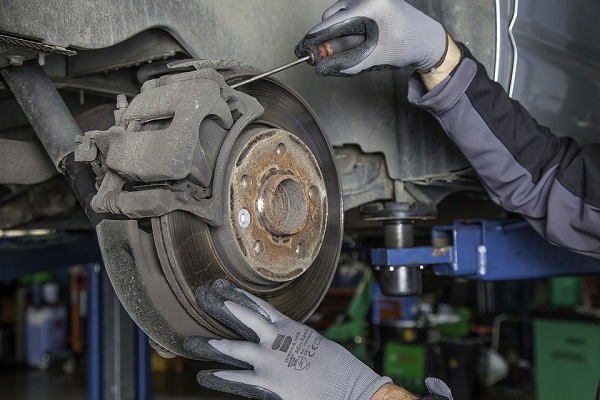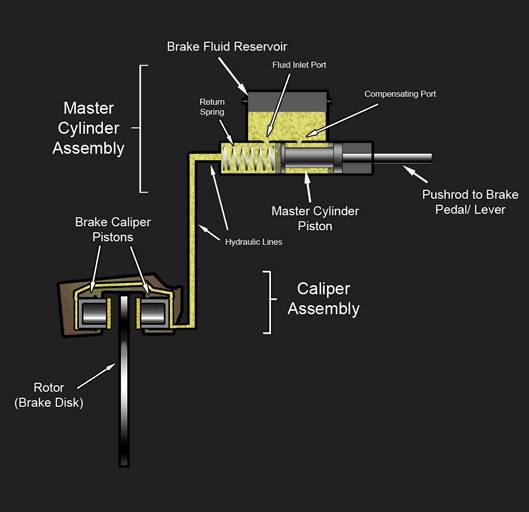The Advantages and Disadvantages of Disc Brake
The brakes are a mechanical device used to stop the vehicle's speed, or the rate of other moving equipment. Brakes use frictional forces to slow down the rate of a moving object until it completely stops. In a vehicle, we often see two types of brakes are commonly used, that is disc brake and drum brake.
The Advantages of Disc Brake

A mechanic checking the disc brake on workshop. [Imange Source : pixabay.com]
Disc brakes have a caliper that functions to press the brake shoes. This brake shoes will touch the disc which slowing the speed of a vehicle.
Disc brake is almost used on front wheel of vehicle such as cars and light truck. This brake has 60% - 80% effectively to stop vehicle. No regulation requires for the disc brake used on the front wheel of vehicle. On condition that, just disc brake can fully the brake performance requirements of FMVSS 105. FMVSS 105 is the standard for braking performance on MPV’s, trucks, or buses that has load more 3500 Kg.
All brakes, both disc and drum brake, will produce heat from the frictional surface between brake linings and the rotor or drums. Disc brake has advantages of heat dissipation until this brake more resistant of brake fade.
Disc brakes more to heat dissipation because of the surface of the disc brake that is directly exposed by the open air. So the heat will easily flow past the discs and make the temperature on the disc brake not rose. In addition, the exposed surface of the air is greater than the frictional surface due to the braking process.

The basic work system of disc brake [Image Source : upload.wikimedia.org]
Disc brakes are also not easy to cause water stuck between the brake tread and discs that will disrupt the brake surface and reduce braking power. The water that is trapped between the brake shoes and the disk is referred to as the water fade.
During its use, disc brakes can remove dust particles trapped by themselves. In addition to dust particles, the fine particles generated by the surface of the brake lining will also be wasted on their own.
Self-adjustment is a calibration process performed on the brake to rearrange the distance between brake linings with drum or rotor surfaces. On disc brakes, this process is not the same as drum brakes. The drum brakes require cable, levers, screws, struts, and other mechanical connections. While on the disc brake, the self-adjustment process involves only the piston caliper. This caliper piston will move as far as it takes for the braking process. After braking, this caliper piston will move back away sufficiently and make the distance between the brake tread and the disc will be in accordance with the existing tolerance.
The Disadvantages of Disc Brake
Disadvantages of brake discs are large rotor surfaces will produce a noisy sound. The surface of the brake shoes and the disc became hard causes of this noise. Another deficiency is the ineffective disc brakes when used as a parking brake. This happens because the brake pads have difficulty in retaining a smooth rotor surface. The disc brake system is only effective to reduce the vehicle's speed, but it is not as effective as drum brakes capable to self-energized to remain stationary while parked.
References
[1] https://en.wikipedia.org/wiki/Brake
[2] Clifton E. Owen, Classroom Manual for Automotive Brake Systems
[3] FMVSS 105
[4] Tim Gilles, Automotive Chassis: Brakes, Suspension, and Steering